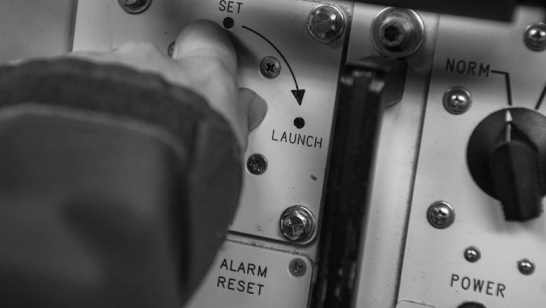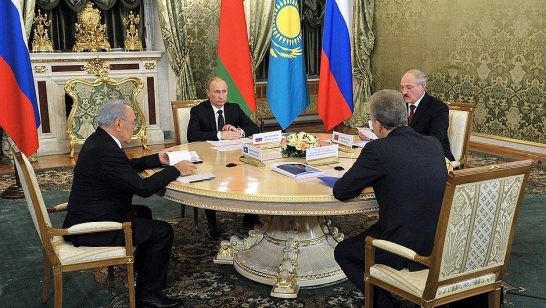
It is tempting to conclude that the sanctions imposed on named individuals and some companies in Russia have had zero impact on the broader economy. The Ministry for Economic Development estimates that GDP expanded 1.3 per cent, year-on-year, in May from 0.9 per cent in the 1st quarter and at a similar pace to that of 2013. Very likely the economy will record growth of at least 1.0 per cent in the 2nd quarter which, if confirmed, means reputation damaging headlines of recession, predicted by the IMF in April, will be avoided. Investors are also optimistic that damage to the economy has been slight as evidenced by the fact that the benchmark MICEX equity index has rallied 20 percent since the Crimea referendum in mid March while the ruble exchange rate against the US dollar closed out June back at the level seen in late January.
But despite the modestly positive trend in the economy and the strong market gains, an assumption that damage has been avoided is wrong. The damage has not been caused by the sanctions seen so far while any additional so-called scalpel type sanctions which may yet come against specific industries should also have only a limited direct impact. The real damage to the economy is potentially much more serious and comes from the voluntary self-sanctions taken by foreign investors, credit providers and some foreign companies active in Russia. While not compelled legally to restrict activities in Russia it is clear that many investors and big international companies have suspended new deals in Russia and have cut risk exposure. They fear reputation risk or being caught out by any move to an expanded and tougher sanctions list. So long as fighting continues on the ground in east Ukraine the prudent course for most will be to limit Russia risk – and then continue waiting just in case.
In terms of self-sanctions and the suspension of fresh investment into Russia, 2014 is already a lost year. It is unlikely that the situation in east Ukraine will be resolved for many months and the threat of further sanctions against Russia will remain. Extending those delayed investments and trade deals into 2015 will be very damaging for the country’s growth prospects. Recall that Russia’s economy was already sliding since early 2013, i.e. one year before the Ukraine crisis. At the start of last year, economists were predicting growth of approximately 3.5 per cent for the year but had to salami slice that several times through the year to eventually end with 1.3 percent growth. The headline reasons for the slower pace was because of lower consumer activity and a negative trend in investment spending by companies. Retail sales, for example, grew at 3.9 percent last year compared to 7.2 percent two years earlier while fixed investment fell 0.3 percent compared to over 10 percent growth in 2011. Part of the reason can be explained by the inconsistent actions of the Finance Ministry and Central Bank which essentially helped the banks make a great deal more money by playing the currency markets than actually lending to consumers. Prevailing high interest rates and easy credit only to the biggest enterprises certainly contributed to the slowdown last year and the weak numbers seen in the 1st quarter this year.
But that’s not the full picture. The basic problem is that the economy has exhausted the previous two strong growth drivers, i.e. consumption and oil. By the middle of last year it became abundantly clear that the economy needs a new growth driver and that must be based on a big step up in sustainable investment and the involvement of foreign companies bringing technology and experience. In his annual address to the Federal Assembly last December, President Putin acknowledged for the first time that the problems in the economy were not due to external contagion but were due to domestic policy failures and a too low level of investment.
The initial efforts were certainly encouraging as, last year, Russia attracted $94 billion worth of foreign direct investment according to a report compiled by the United Nations. That was a jump of 83 percent over the previous year and placed Russia third in the table behind China and the United States. Some of the Russian total was due to the BP investment into Rosneft as part of the deal to sell TNK. But the success of Russia’s Direct Investment Fund (R.D.I.F.), which attracted just under $10 billion of fresh commitment in 2013, was also an important factor. To that extent the Ukraine crisis and the suspension of fresh investment and trade deals by many foreign companies, especially in those industry sectors outside of extractive industries, could not have come at a worse time.
Where Russia has had some luck is with the oil price. The oil price remains well supported by the high risk premium and supply disruptions caused by the various wars in North Africa and across the Middle East. It means that the Federal Budget has remained in surplus through the first five months of this year and despite a near 7 percent increase in spending. That spending, in such areas as public sector salaries and higher social supports, has been a big factor in the better economic performance in the 2nd quarter. But that is not sustainable after the government agreed to stick with the original planned spending for 2014 which will mean a cap of 5 percent growth in spending through the full year. And even if the government alters the spending cap in the autumn, the reliance on higher oil revenues ultimately weakens the economy and leaves the country vulnerable to future shocks.
If the economy manages to grow at approximately 1 percent again this year that may seem like a small victory against the threat of sanctions disruption. But it will be a second year of low growth in an economy which actually needs average annual growth of at least 4 percent if it is to achieve real diversification and social development. The near $2.5 trillion of earnings generated by oil and gas exports over the past fourteen years often masks the fact that the economy is still relatively young and needs to sustain steady strong growth outside of extractive industries. 1.0 to 1.5 percent annual growth will soon start to feel like stagnation and that may either lead to a much greater and dangerous role for the state in the economy or less social and political stability within a few years.
Russia needs to get back on track with the investment led growth model. It cannot afford more than a one year disruption. That, at minimum, means bringing an end to the background conditions which keeps sanctions risk high and justifies the damaging self-sanctions and investment delays. The hope is that we will also see a more proactive response from government in the autumn to give greater support to the far too slow moving reform programmes that are required. The Ukraine crisis is certainly a pivotal event for Russia and its political and economic relations with the EU. Currently the risks are skewed negatively and the threats are very clear and real. But the crisis is also an event which may yet turn out to be a positive catalyst. Time will tell.
The opinions articulated above represent the views of the author(s), and do not necessarily reflect the position of the European Leadership Network or any of its members. The ELN’s aim is to encourage debates that will help develop Europe’s capacity to address the pressing foreign, defence, and security challenges of our time.



